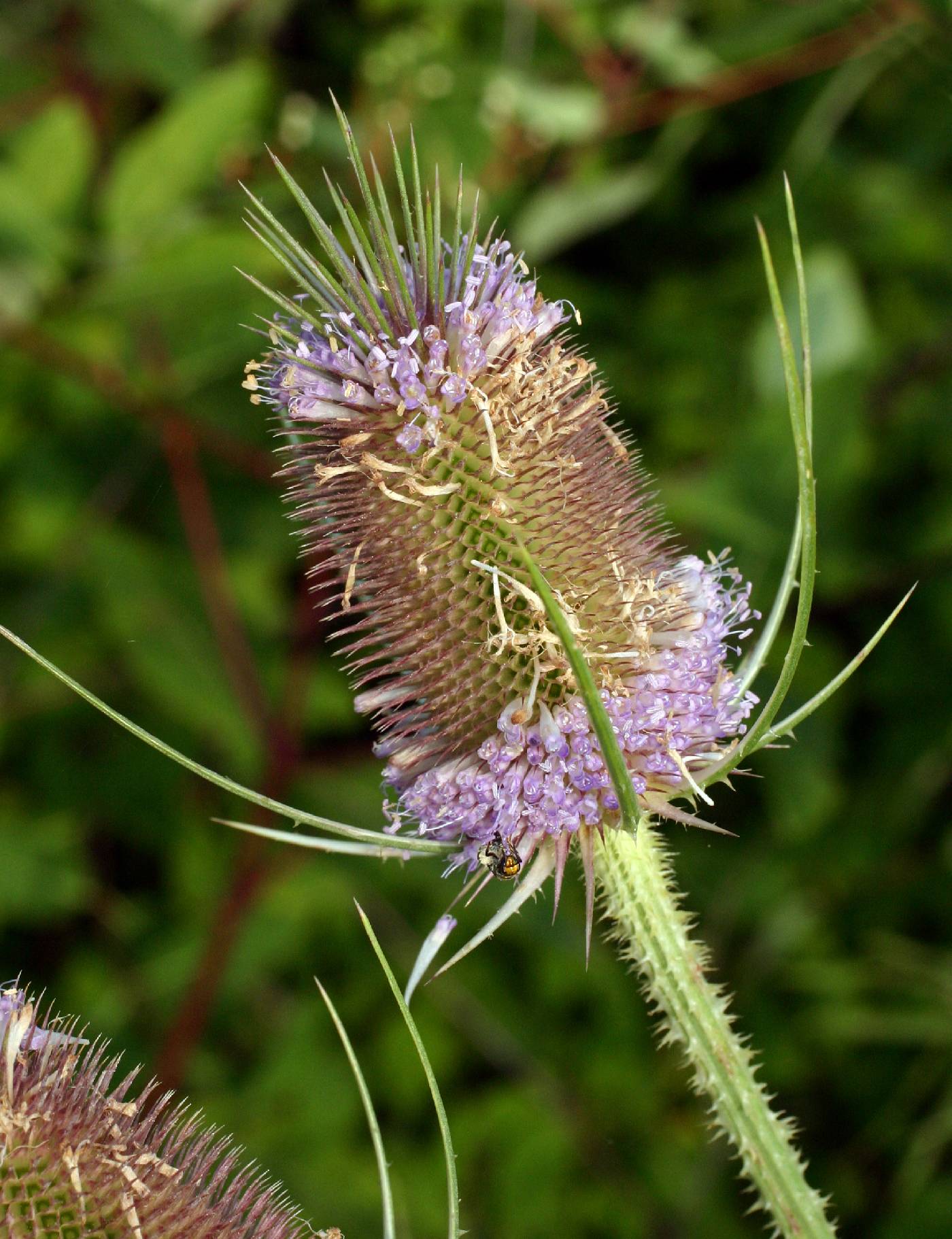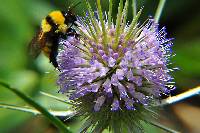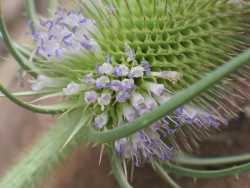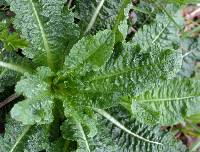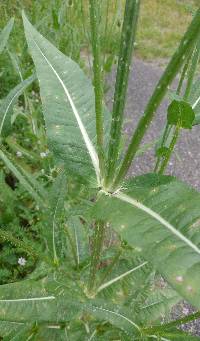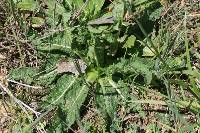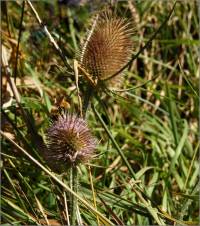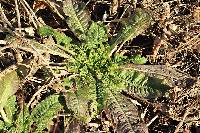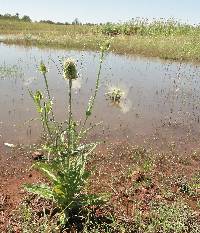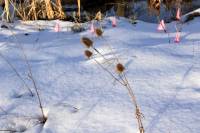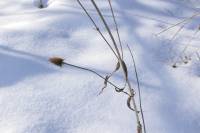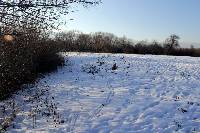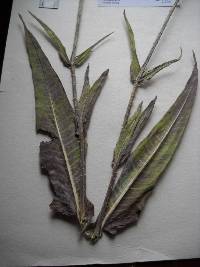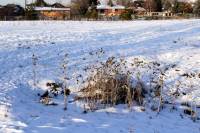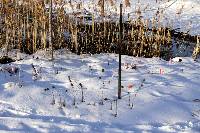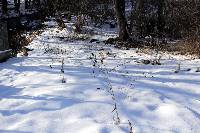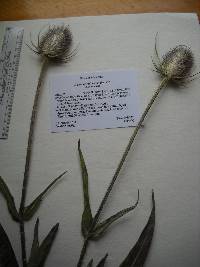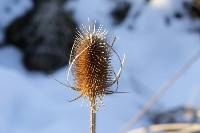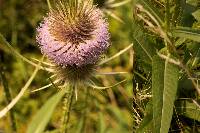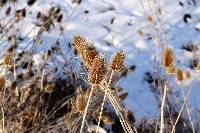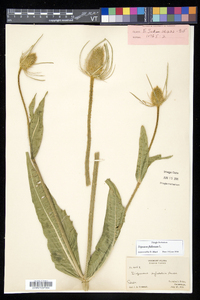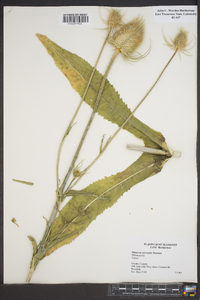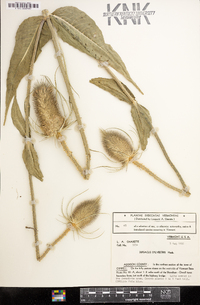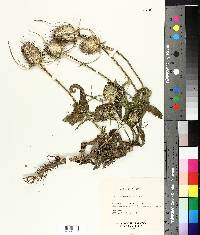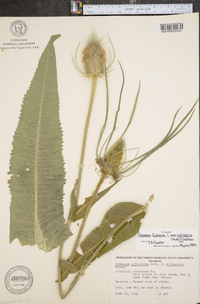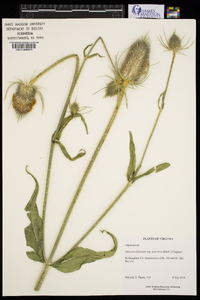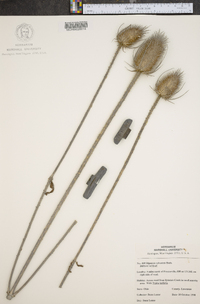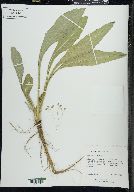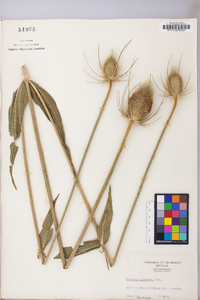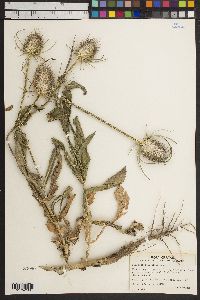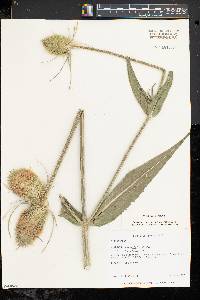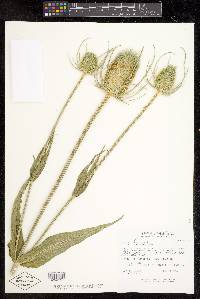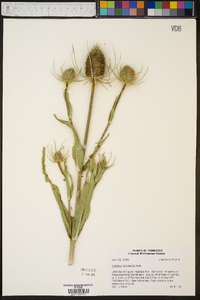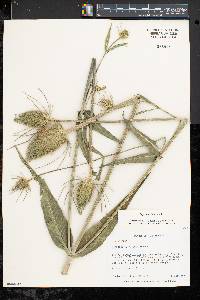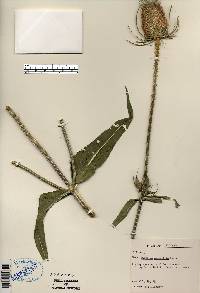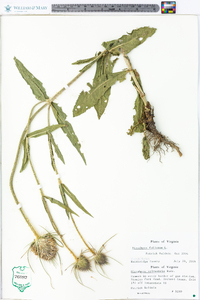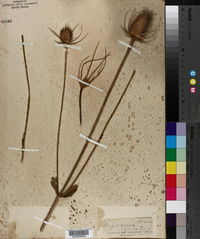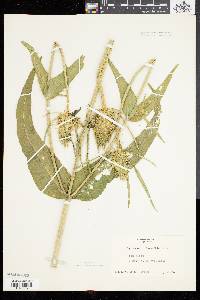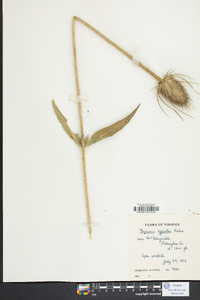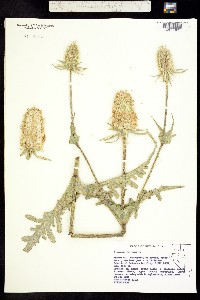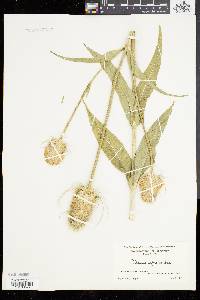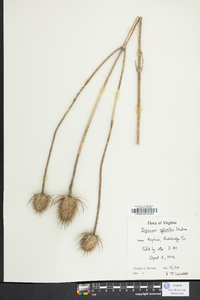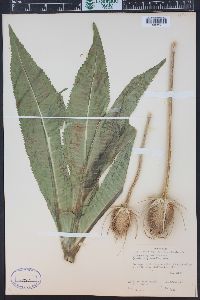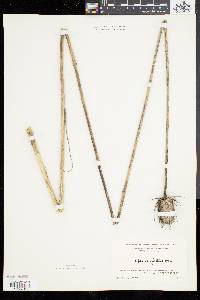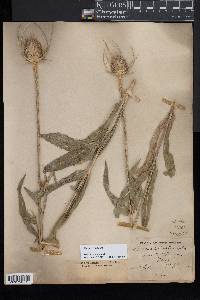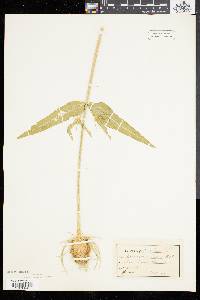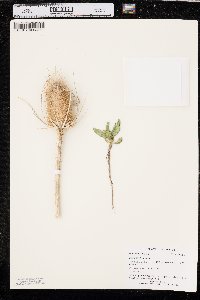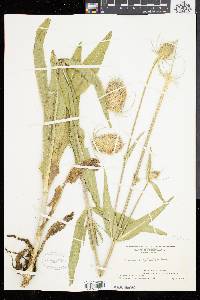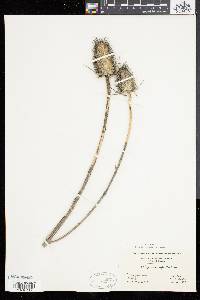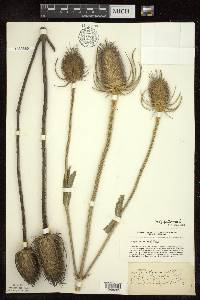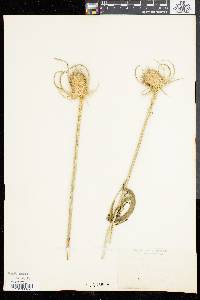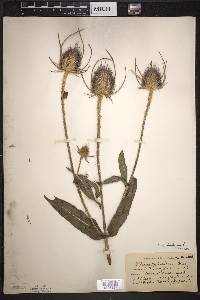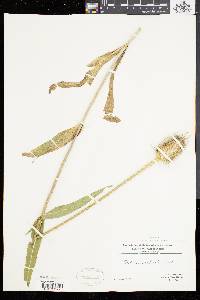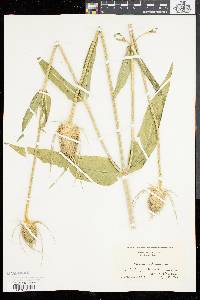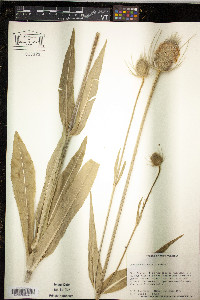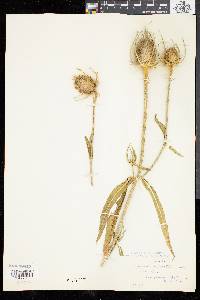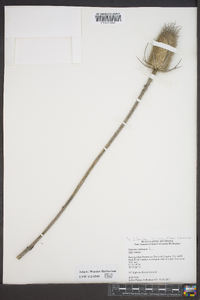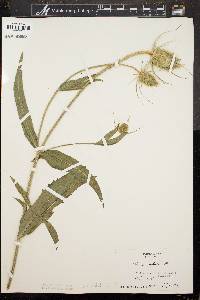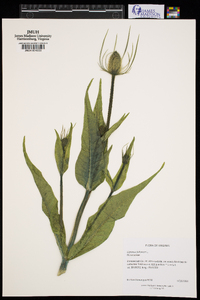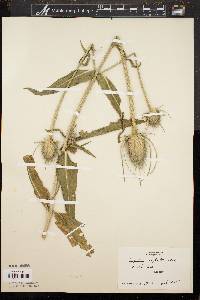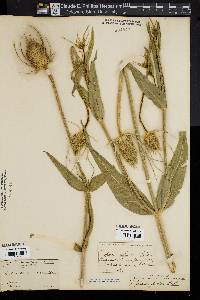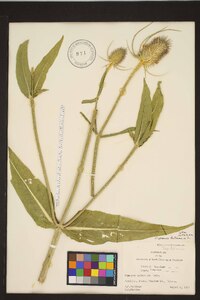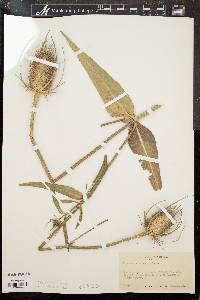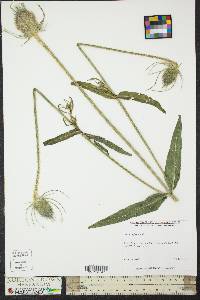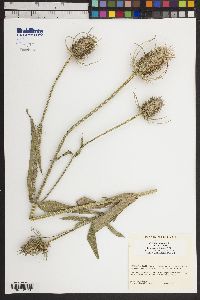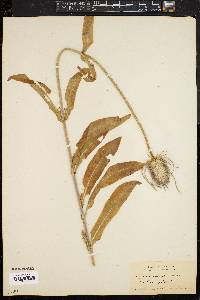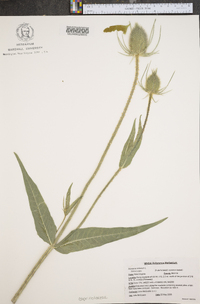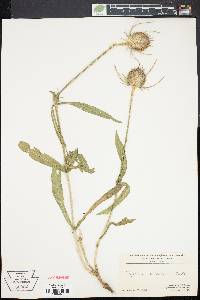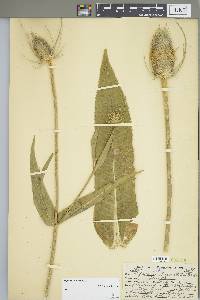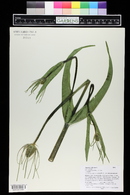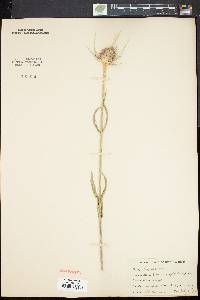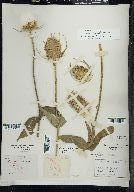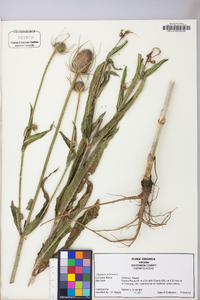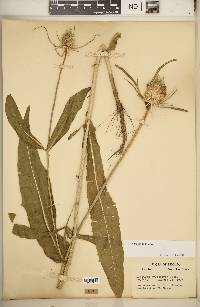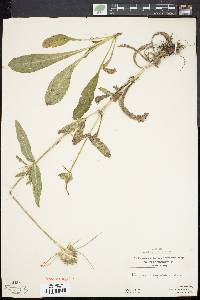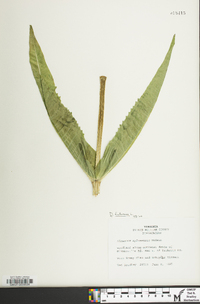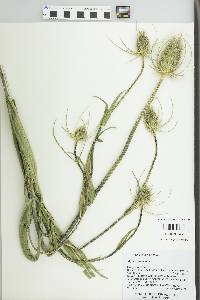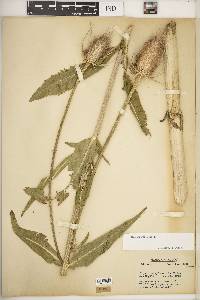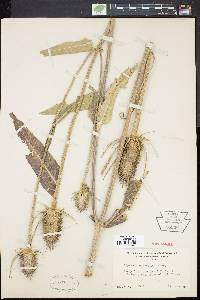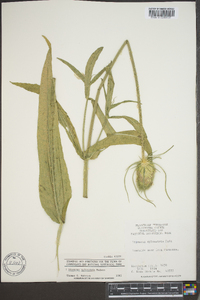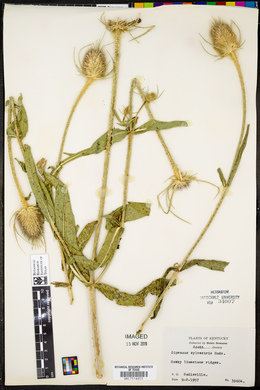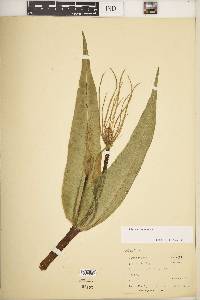
|
|
|
|
Family: Caprifoliaceae
Fuller's Teasel, more...Fuller's teasel, common teasel, teasel, venuscup teasle
[Dipsacus fullonum subsp. sylvestris (Huds.) Clapham, moreDipsacus fullonum var. sylvestris , Dipsacus sylvestris Huds.] |
Plant: biennial herb, 0.5-2.0 m tall; STEMS angled, furrowed, striate, prickly on the angles, branched above Leaves: glabrous except for numerous swollen-based prickles on the midrib beneath; basal leaves shortly and inconspicuously petiolate, oblong to oblanceolate, obtuse or acute, entire to crenate, in a rosette, dying early in the second season; cauline leaves lanceolate, sessile, connate at the base forming a cup, 10-30 cm long; lower cauline leaves crenate to serrate; upper leaves entire, often ciliate INFLORESCENCE: an erect, ovoid to cylindric head, 3-10 cm long, terminating long naked peduncles; involucral bracts prickly, unequal, curving upwards, often surpassing the heads, sometimes foliose but more frequently stiff and narrow; involucel bearing a straight awn Flowers: calyx silky, 1 mm long; corolla slender, pubescent, 10-15 mm long, the tube white, the lobes 1 mm long, purple Fruit: 4-angled, with appressed hairs and persistent calyx, 5 mm long Misc: Fields and roadsides; 2100-2550 m (6900-8400 ft); Jul-Oct REFERENCES: Laferriere, Joseph E. Dipsacaceae. 1994. J. Ariz. - Nev. Acad. Sci. Volume 27, 201-202. Duration: Biennial Lifeform: Forb/Herb General: Introduced biennial, 50-200 cm tall; stems erect, stout, striate, angled, prickly on the angles and becoming more so upwards; taprooted. Leaves: Basal (forming a rosette and usually dying early in the second season) and cauline, opposite, simple, blades more-or-less prickly, especially on the midvein below, otherwise glabrous; basal blades oblong to oblanceolate, margins crenate, apex obtuse to acute; cauline blades 10- 30 cm long, the lower blades crenate to serrate, becoming entire upwards, often ciliate; basal blades short- petiolate, cauline blades sessile and connate at their bases, forming a cup. Flowers: Inflorescence of terminal cymes with mostly 2-3 branches, sometimes rather open, with the branches up to 8 cm long; sepals 5, lanceolate to oblong-lanceolate, 2-4 (6) mm long, nearly equal, conspicuously spurred; petals 5, lanceolate, 4-7 mm long, 1.5-2 mm wide, white or pinkish at center, apex blunt to broadly acute; flowers July- September. Fruits: Achene, 5 mm long, 4-angled, appressed-hairy. Ecology: Moist low sites, roadsides, fields, waste places, disturbed habitats; 2100-2600 m (6900-8400 ft); Coconino and Yavapai counties; widespread throughout North America. Notes: The Navajo use this plant to card wool. Flowers are also used in dried flower arrangements. Synonyms: Dipsacus sylvestris, Dipsacus fullonum subsp. sylvestris Editor: Springer et al. 2008 Long cult. as the fullers' teasel, is rarely adventive with us. It differs from the closely allied wild D. sylvestris in the stouter, strongly recurved spine-tips of its receptacular bracts. Linnaeus included both in his D. fullonum, and the name has subsequently been restricted by different authors to each of them. Gleason, Henry A. & Cronquist, Arthur J. 1991. Manual of vascular plants of northeastern United States and adjacent Canada. lxxv + 910 pp. ©The New York Botanical Garden. All rights reserved. Used by permission. Stout, taprooted biennial (or short-lived, monocarpic perennial) 0.5-2 m, the stem increasingly prickly on the angles above; lvs ±prickly, especially on the midrib beneath, otherwise smooth or nearly so, the basal ones oblanceolate, crenate, generally dying early in the second season, the cauline lanceolate, to 3 dm, becoming entire upwards, commonly connate at base; heads erect, ovoid or subcylindric, 3-10 cm, on long naked peduncles; involucral bracts upcurved, unequal, the longer ones surpassing the heads; receptacular bracts ending in a conspicuous stout straight awn; cal silky, 1 mm; cor slender, hairy, 10-15 mm, the tube whitish, the short (1 mm) lobes generally pale purple; fr 5 mm; 2n=16, 18. Roadsides and waste ground, especially in moist low places; native of Europe, now a widespread weed in N. Amer. July-Sept. Gleason, Henry A. & Cronquist, Arthur J. 1991. Manual of vascular plants of northeastern United States and adjacent Canada. lxxv + 910 pp. ©The New York Botanical Garden. All rights reserved. Used by permission. From Flora of Indiana (1940) by Charles C. Deam An obnoxious weed along roadsides, on the banks of streams, and in waste places, fields, and open woods. ...... Indiana Coefficient of Conservatism: C = null, non-native Wetland Indicator Status: FACU |
|
|
|
This project was made possible in part by the Institute of Museum and Library Services [MG-70-19-0057-19].
Powered by Symbiota

